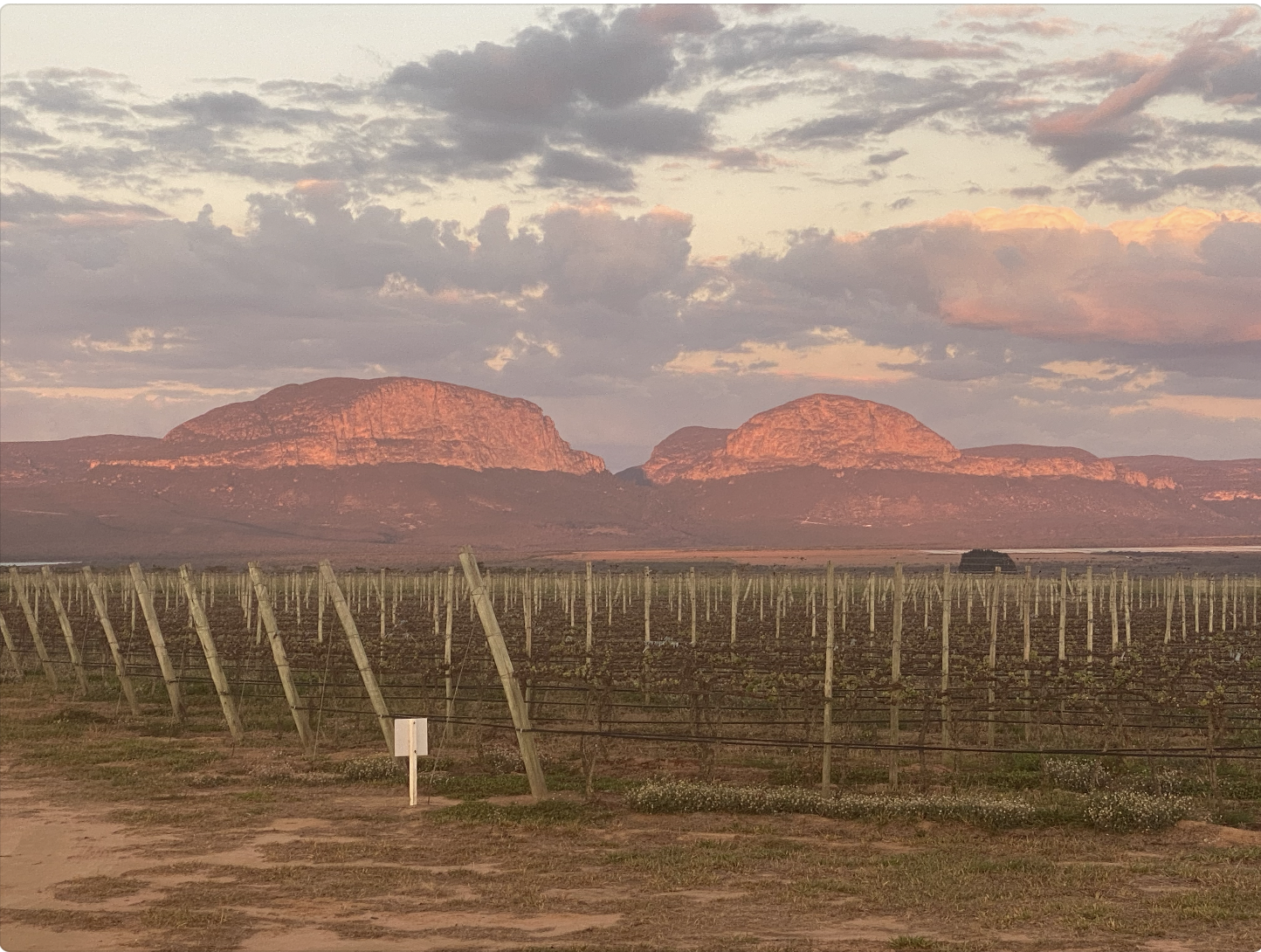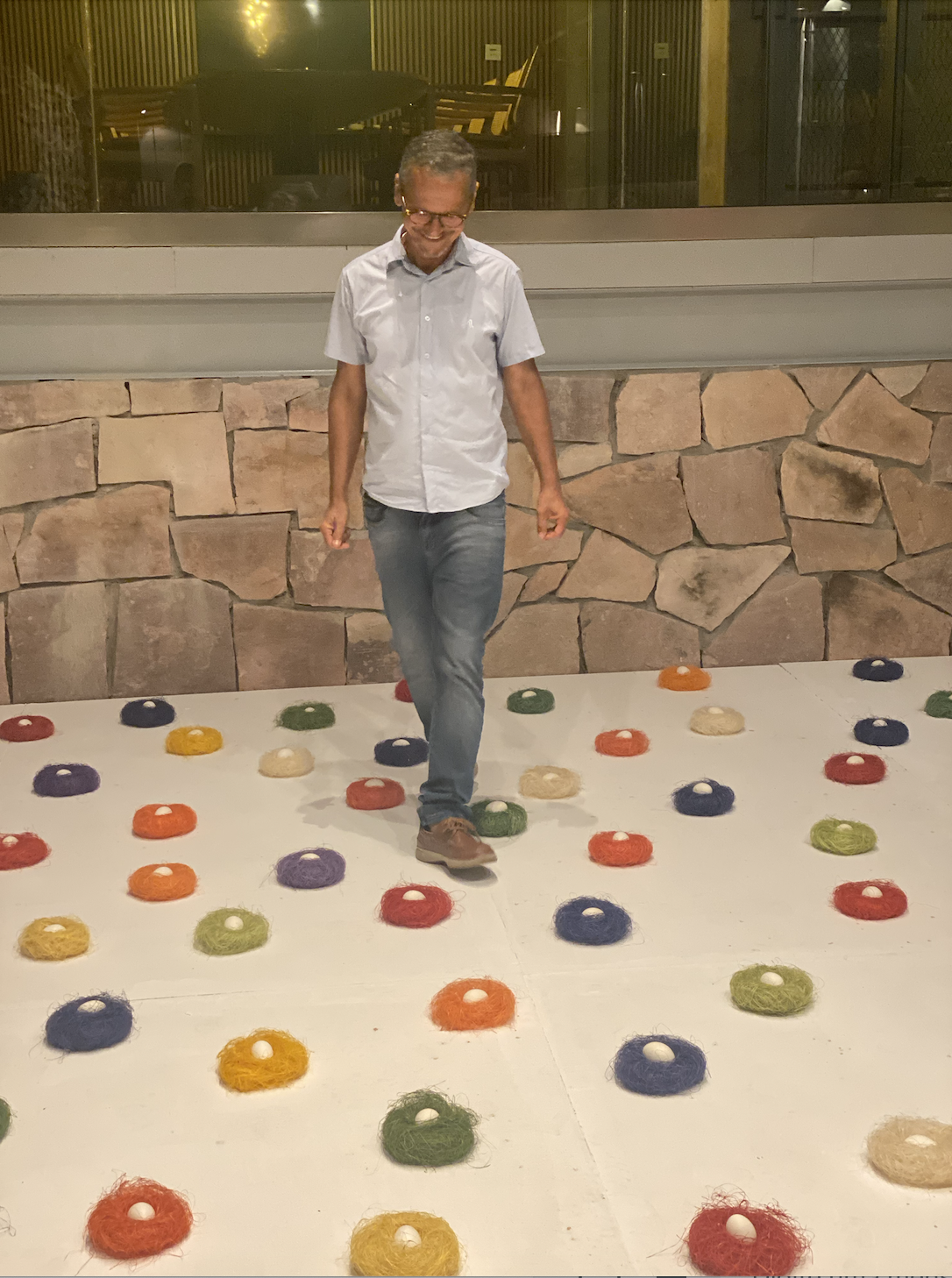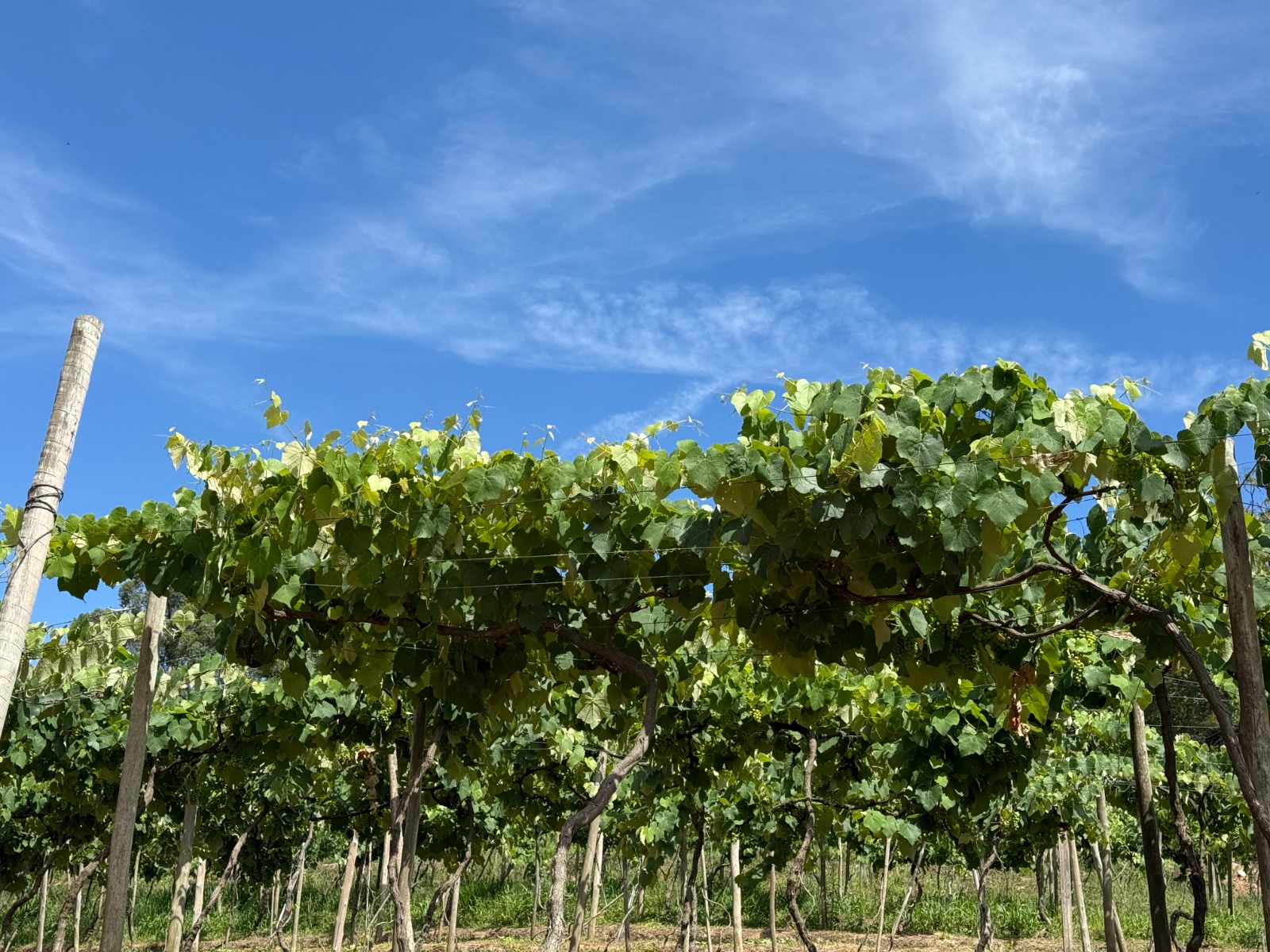read the text in English at the end of the article in Portuguese
(vista dos vinhedos de Syrah da vinícola Uvva em Mucugê, na Chapada Diamantina)
Não precisamos repetir que o Brasil é grande, enorme, um país continental, um dos maiores do mundo com uma extensão territorial de mais de 8,5 milhões de quilômetros quadrados, com diferentes climas nas mais diversas regiões: a mescla de equatorial, tropical e temperado nos dá uma diversidade climática que não é comum em muitos lugares.
Aqui, em média, as temperaturas são elevadas durante o ano, oscilando perto dos 24oC, com uma amplitude térmica de 5o ou 6o.
Mas há os extremos, que em geral não são bons. A não ser para determinadas culturas, e a da uva cultivada para fazer vinho, é uma delas.
Pois essa amplitude térmica é um dos pontos altos das características que compõem o terroir da Chapada Diamantina (foto abiaxo), na Bahia, Nordeste do Brasil, mais especificamente no município de Mucugê, onde fica a vinícola Uvva. Pesquisando referências, lendo artigos, estudando tabelas, temos a informação de uma variação média de 12o a 15o graus no verão e de 9o a 10o, no inverno. Porém quem mora e trabalha lá, diz outra coisa: “Nós direcionamos nossa colheita para o período do inverno”, diz Marcelo Petroli, enólogo da Uvva desde o início das suas vinificações, “trabalhamos com a Dupla Poda porque é no inverno que temos nossa maior amplitude térmica, com noites frias e dias quentes, chegando a 20o de variação de temperatura no mesmo dia, uma condição que proporciona a maturação completa das uvas “.
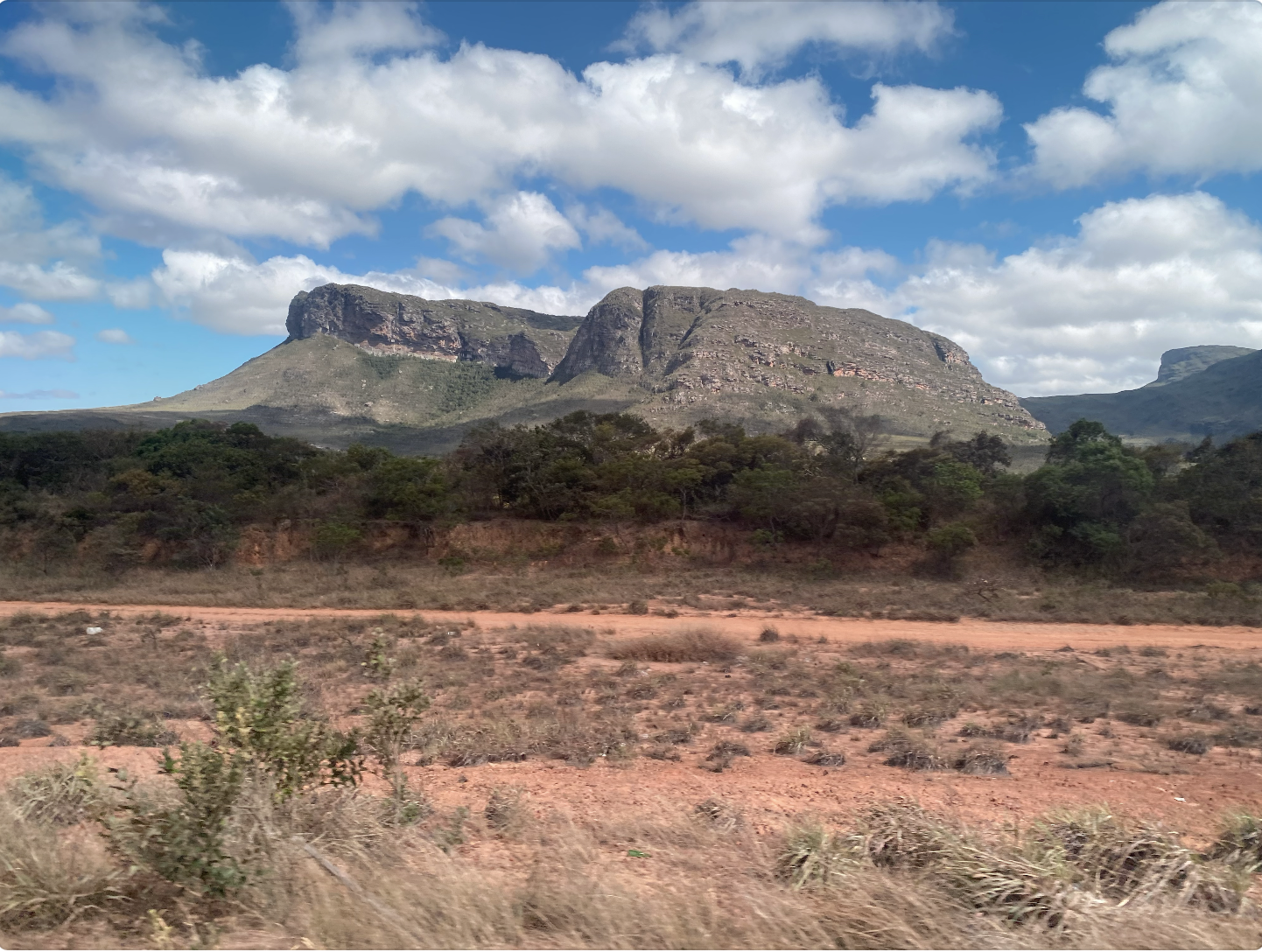
Talvez este seja um dos principais pontos pelos quais os vinhos de inverno – e neste caso os da Uvva, em especial – venham se destacando tanto recentemente. A amplitude térmica, somada a outras características de terroir tão importantes quanto, dita a personalidade das uvas e por consequência, dos vinhos. Aqui, especificamente os da Uvva, que apresentam acidez elevada e um toque de salinidade no paladar, algo a ser lembrado, quem sabe, como uma das assinaturas da vinícola.
Esta foi apenas uma das percepções que tivemos ao visitar a Uvva (foto abaixo), um oásis em meio à vegetação que mistura as características de cerrado e caatinga da Serra do Sincorá, cercada por encostas rochosas, constituídas por diferentes tipos de minerais, entre eles, quartzos, rochas vulcânicas e xistos.
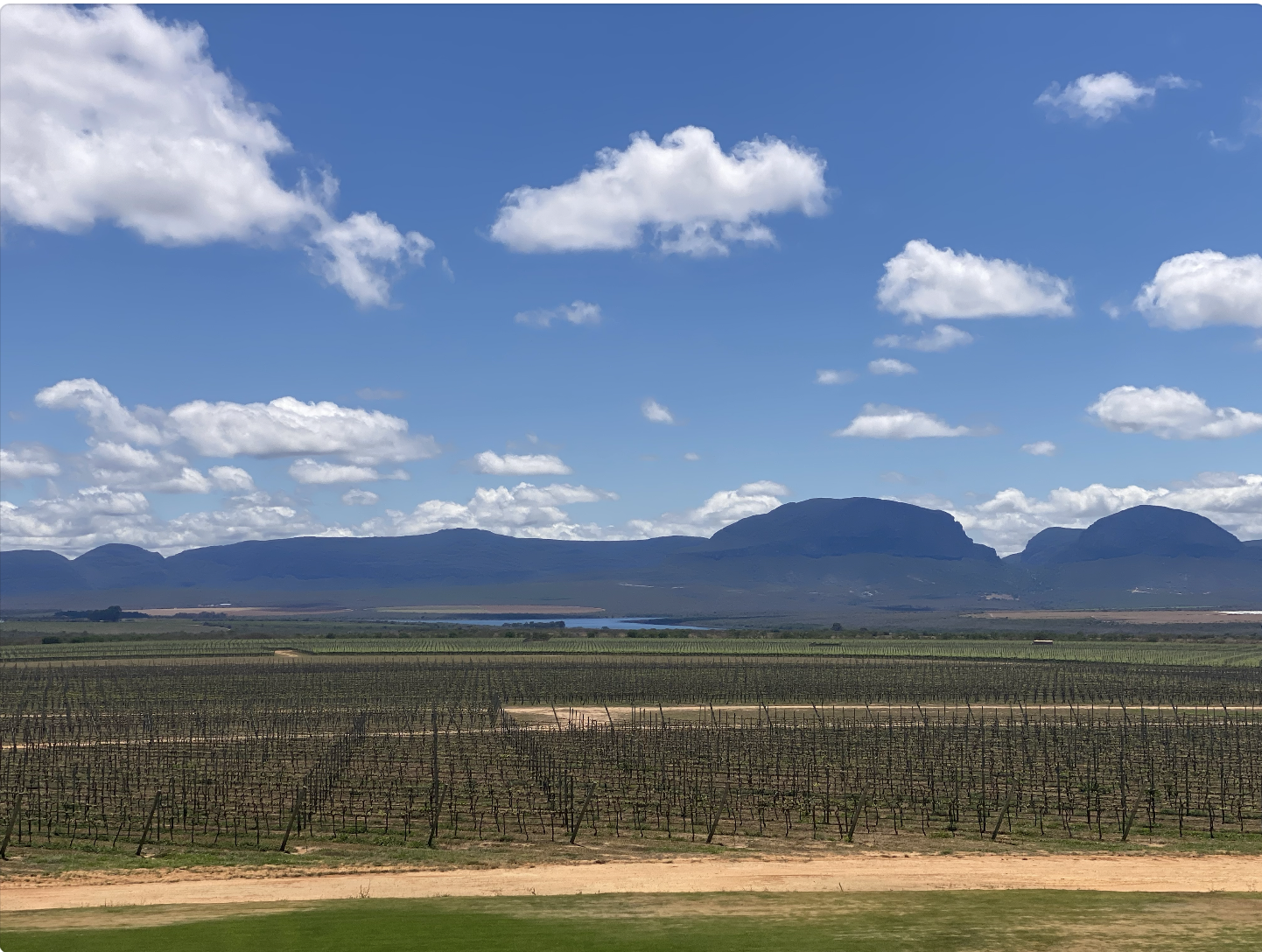
Uma vista de boa parte dos 52 hectares de vinhedos que têm a irrigação garantida pela Barragem do Apertado – o maior manancial de água da região, que faz a Chapada Diamantina ser conhecida como a caixa d’água da Bahia – é o destaque que tira o fôlego de quem entra pela primeira vez no prédio da vinícola – uma obra de arte da arquitetura do vinho, assinada por Vanja Hertcert.
.
Antes da Uvva
A origem da Uvva se confunde com a história da interiorização do Brasil. Foi nos anos 80 que a família Borré deixou São Paulo das Missões, no interior gaúcho, em busca de novos horizontes no centro do país. A ideia de Pedro e Ivo Borré – pai e filho – era adquirir terras no Mato Grosso, mas por fim compraram uma área em Ibicoara, na Chapada Diamantina, onde passaram a trabalhar com o que sabiam: soja e trigo, porém as culturas não se adaptaram aos longos períodos sem chuva. Em seguida optaram por milho e cebola, mas o resultado foi muito similar. Na terceira tentativa, feijão, sequeiro e depois tradicional, aos poucos a situação começava a melhorar. Nos anos 90 novos produtores chegam à região trazendo uma novidade: a cultura da batata inglesa. Os Borré entram sestrosos com o plantio de apenas 2 hectares – hoje, 30 anos depois, são mais de 20 mil hectares cultivados na Fazenda Progresso, com produtividade de cerca de 50 toneladas por hectare, o dobro da média nacional, em função do clima diferenciado, da amplitude térmica e da altitude, que permitem a colheita diária de batatas.
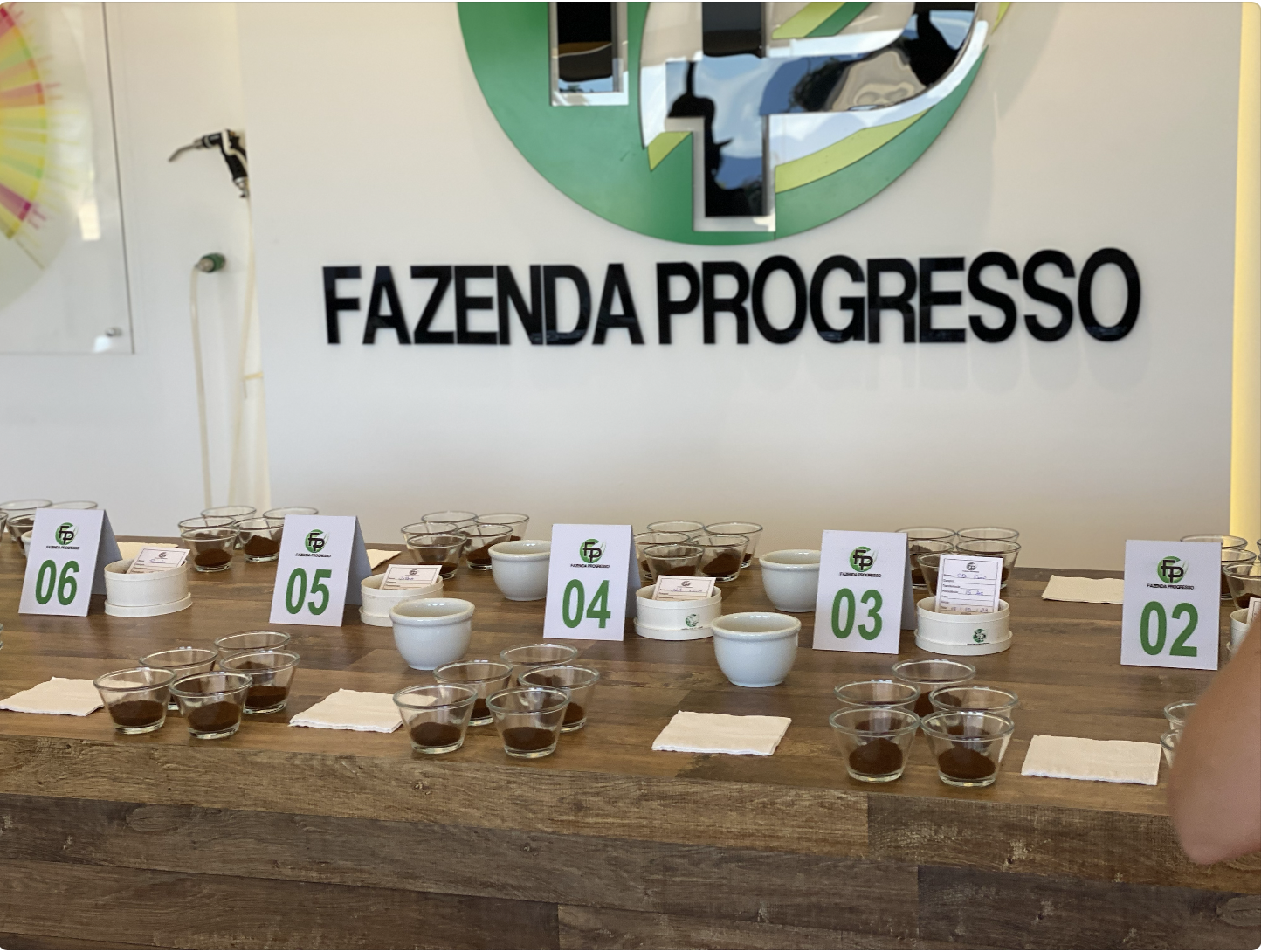
O café
Circundadas pelas montanhas da Serrá do Sincorá e numa altitude de pelo menos 1,1 mil metros, as terras da Fazenda Progresso pareciam perfeitas para outra cultura que se adaptou muito bem à região: o café. E foi essa a aposta dos Borré em 2005. Atualmente este produto tipicamente brasileiro produzido pela Progresso tem 80% da sua produção exportada para 10 países. No Brasil o café de origem da Chapada Diamantina cultivado na fazenda Progresso pode ser encontrado em algumas capitais com a marca Latitude 13.
O vinho
Alguns anos depois, um novo desafio. Com conhecimento amplo do solo, do clima, do entorno, do relevo, do terroir, os Borré fazem mais uma aposta: plantar e cultivar uvas para produzir vinhos de excelência no Nordeste do Brasil. Para isso, se cercaram de profissionais, experimentos e pesquisa de ponta, tiveram a Embrapa Uva e Vinho como parceira e desenvolveram todos os primeiros estudos e vinificações na sede da entidade em Petrolina – outro polo vitivinícola da região, mas esta é uma história para outro dia.
As primeiras vinificações feitas em 2015 a partir das uvas plantadas em Mucugê em 2013 e 2014, foram, com o perdão do trocadilho, água e vinho para diferentes pessoas. Fabiano Borré, neto de Pedro e filho de Ivo, hoje à frente da vinícola, achou o resultado, em suas palavras “lamentável”, a ponto de pensar em desistir do negócio. Mas foi prudente e ouviu a opinião de especialistas, entre eles Giuliano Pereira, pesquisador em enologia da Embrapa, que viu a taça ‘meio cheia’ e assegurou que aquele vinho tinha potencial.
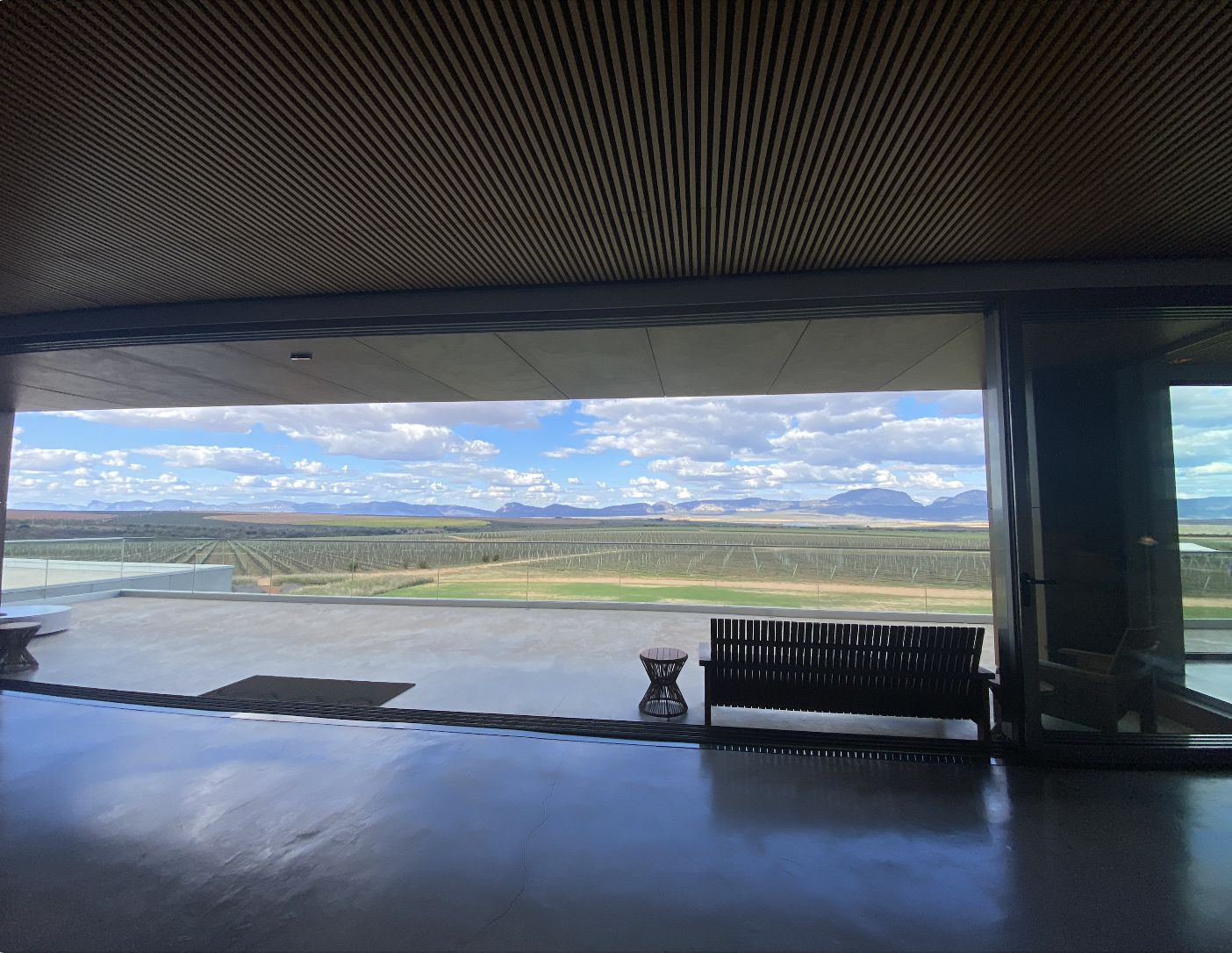
A Uvva
Um pulo no tempo e chegamos a março de 2022, quando é oficialmente inaugurada a vinícola Uvva, um sonho enológico de excelência que vinha sendo gestado há pelo menos 12 anos. O projeto arquitetônico da vinícola, desenvolvido pelo escritório de Vanja Hertcert, especializada neste tipo de empreendimento, por exemplo, começou a ser desenvolvido em 2014, foram oito anos de execução de obra física, que resultaram em uma vinícola de ponta, com mais de 5 mil metros quadrados de área construída em três pavimentos, localizados em uma área total de 72 hectares.
A vinícola, avistada da rodovia, é impactante. Mas o efeito maior se dá quando a porta principal – propositalmente mantida fechada – é aberta aos visitantes: imediatamente se descortina uma vista panorâmica de 80 quilômetros, 52 hectares de vinhedos, uma represa ao fundo e as rochas da Chapada Diamantina como moldura. É de tirar o fôlego.
Mas um copo d’água gelada ajuda, e uma taça de um belo espumante, anima.
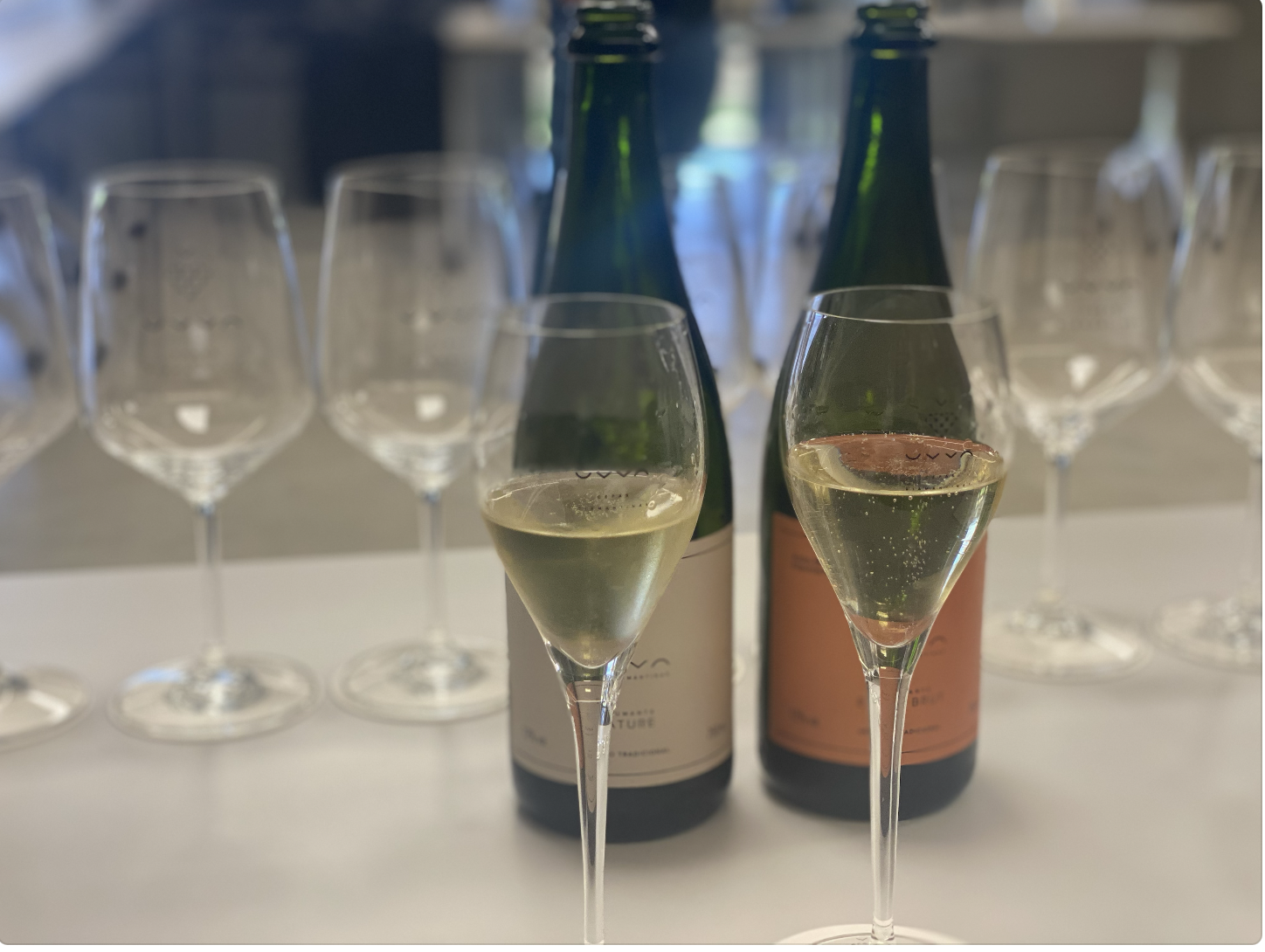
* spoiler: degustamos dois espumantes em primeira mão, que devem entrar no mercado ainda em 2023, lembre disso e peça um extra brut.
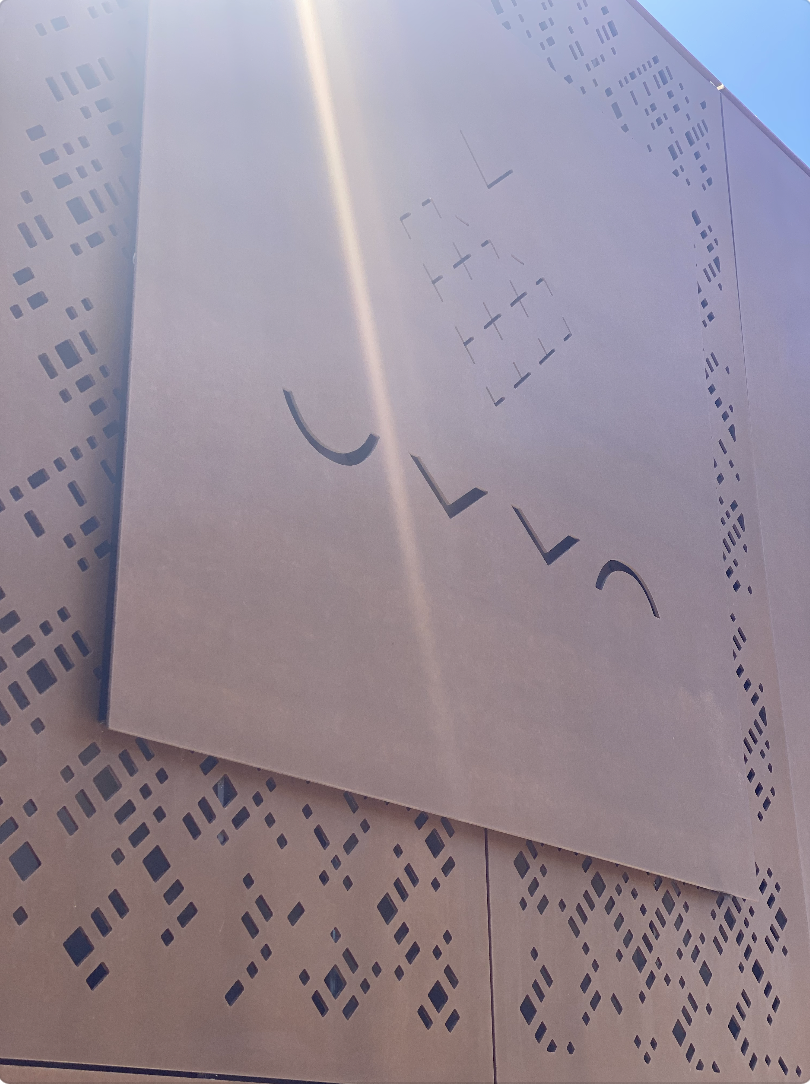
Nos três andares da vinícola o mesmo estilo elegante, requintado e tão minimalista quanto a marca: já viu nome mais simples, óbvio e genial para uma vinícola do que Uvva?
Porque sim, uva é tudo – ou quase – para o vinho. O porquê da repetição da letra V e a explicação da iconografia da marca podemos perceber olhando a vista e conhecendo a história da região, e aí tudo se torna ainda mais lógico, óbvio, natural e orgânico.
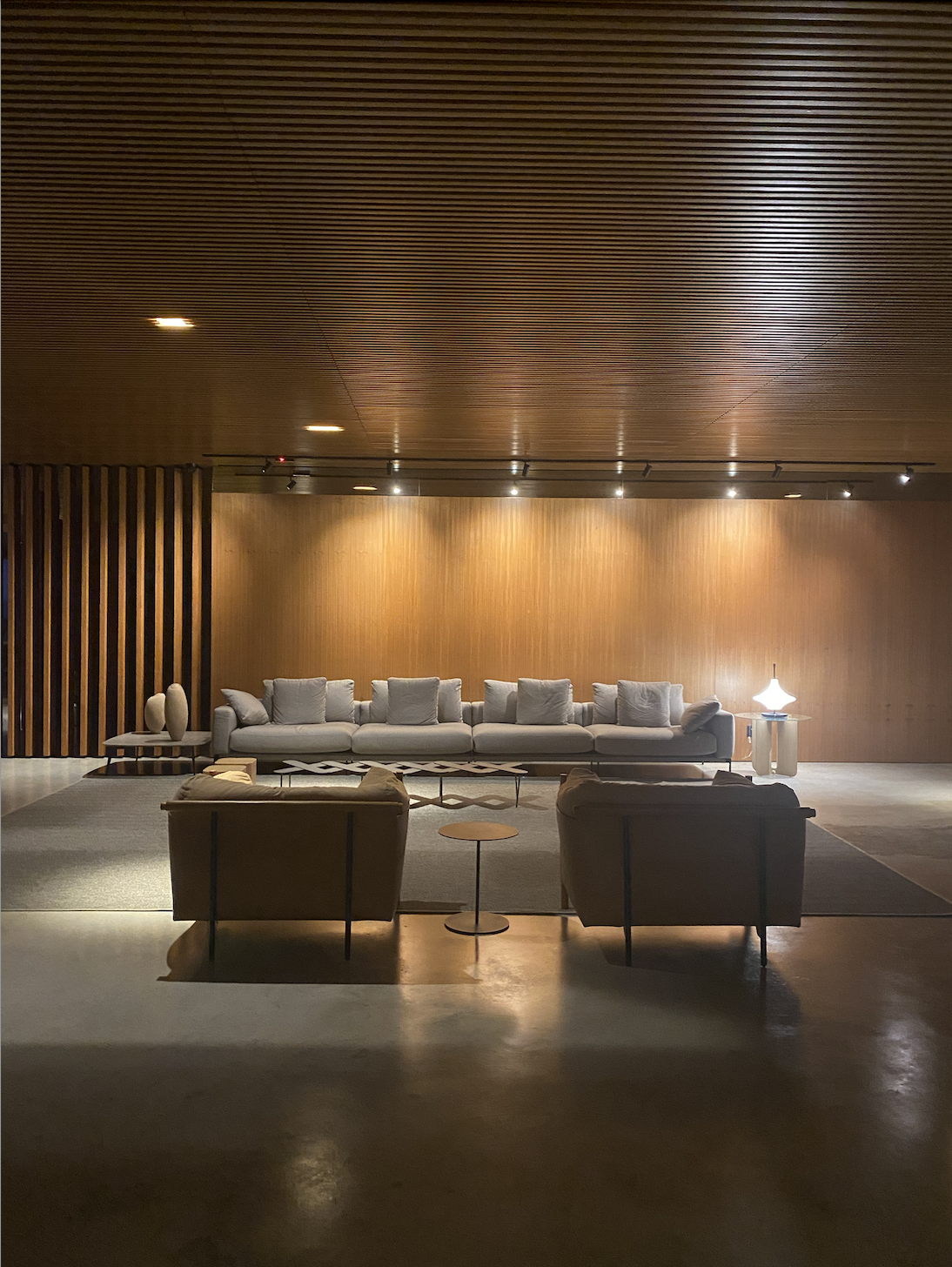
No primeiro andar, receptivo, loja e restaurante, mobiliário assinado por designers brasileiros como Sergio Rodrigues, Jader Almeida, Arthur Casas e Carlos Motta. No restaurante, cardápio regional, harmonizado; nos materiais construtivos, produtos locais; nos equipamentos da vinícola, preferência pela utilização de maquinários da indústria brasileira. No térreo salas de degustação, laboratórios, tanques e o local onde tudo começou e hoje serve como grande laboratório de testes: a sala de microvinificação.
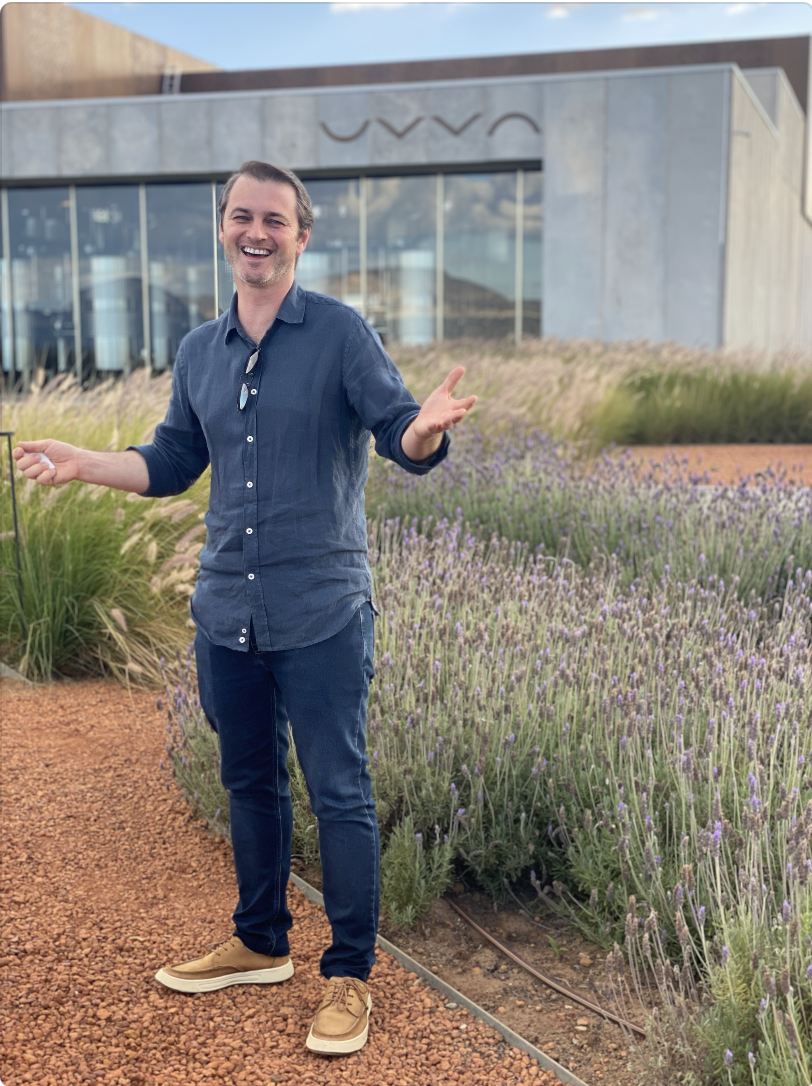
O começo de tudo
Fabiano Borré (foto acima), filho de Ivo e neto de Pedro, e hoje diretor executivo da Uvva, conta com orgulho que foi na microvinificação que tudo teve origem. “A Uvva começou aqui”, conta. “Foi a primeira área construída, todo o resto veio depois”.
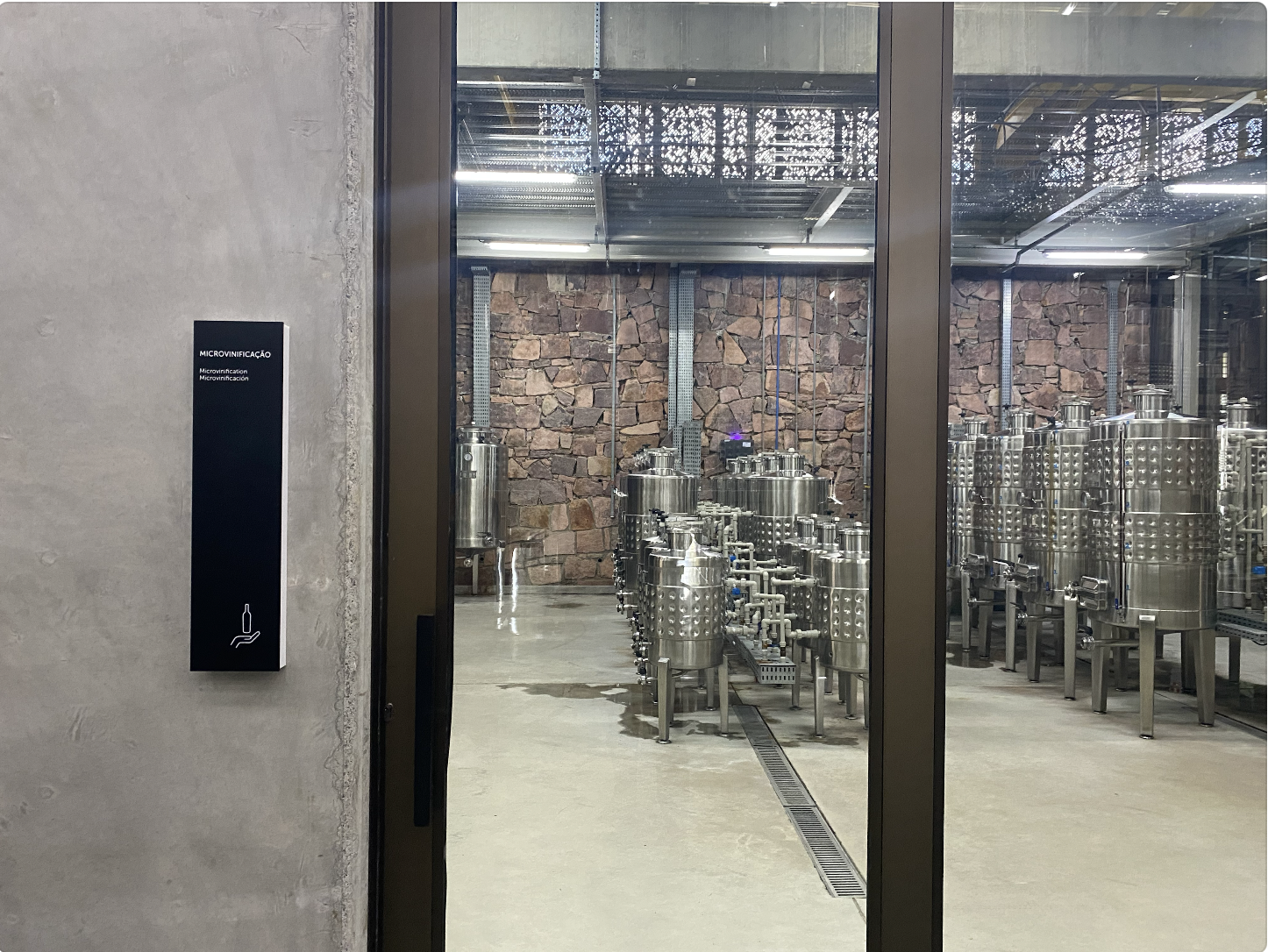 A sala de microvinificação (foto acima) é uma vinícola em tamanho reduzido: tanques, laboratório, barricas, envase. E recentemente uma novidade que Fabiano chama de “Máquina do Tempo”, um destilador para a produção de vinhos fortificados. “O vinho entra desse lado hoje e só sairá em 2030”, brinca. Vamos esperar para ver.
A sala de microvinificação (foto acima) é uma vinícola em tamanho reduzido: tanques, laboratório, barricas, envase. E recentemente uma novidade que Fabiano chama de “Máquina do Tempo”, um destilador para a produção de vinhos fortificados. “O vinho entra desse lado hoje e só sairá em 2030”, brinca. Vamos esperar para ver.
A galeria de arte
Mais um andar abaixo, em uma vinícola, encontraríamos geralmente pouca luz, silêncio, uma cave e as barricas. E sim, na Uvva não é diferente. Ou é, porque além das barricas – centenas delas – há também uma galeria de arte com a curadoria de Paulo Herkenhoff. Um espaço reservado a exposições como ‘Templo Espelhado’, do soteropolitano Marcos Zacariades (foto acima).
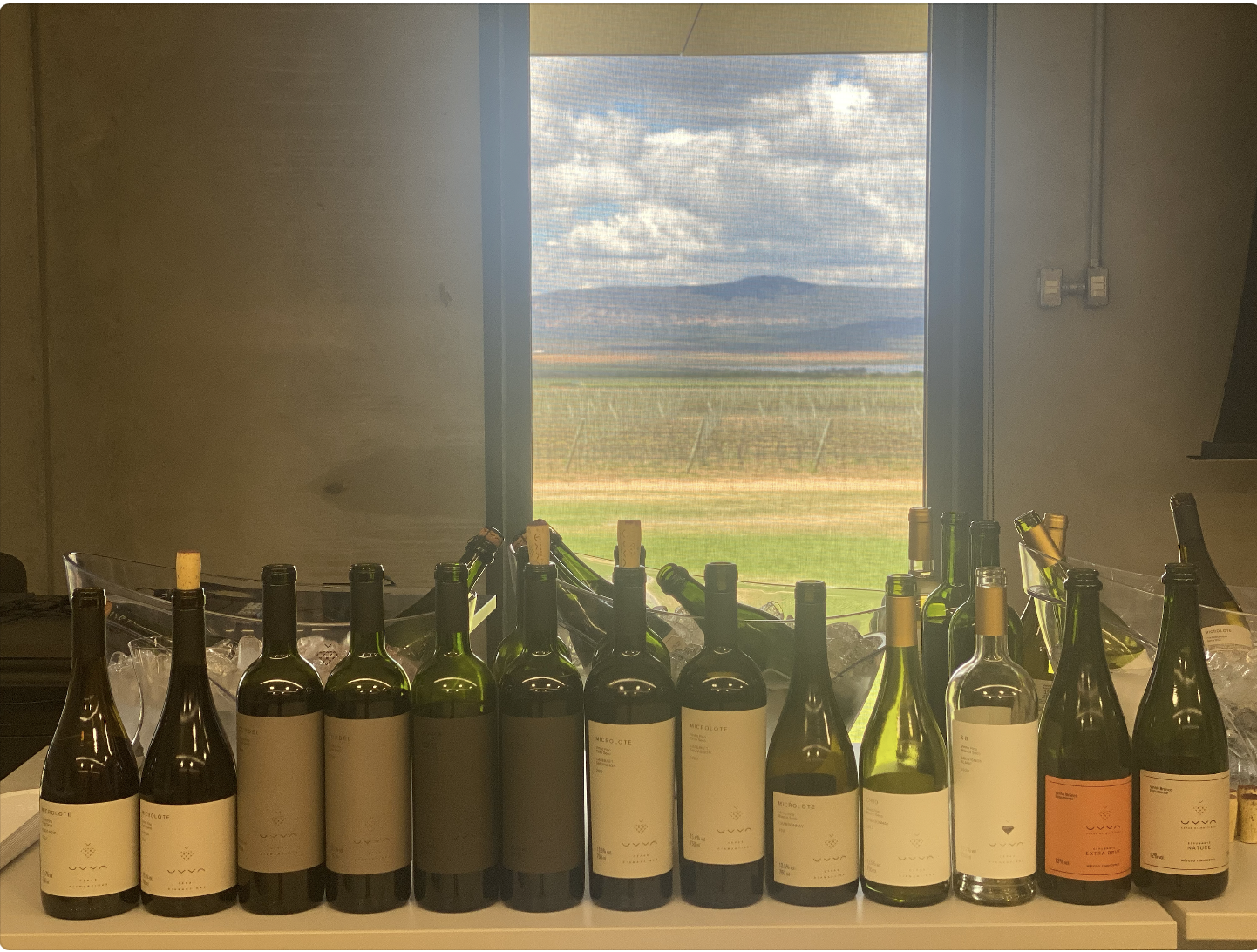
Os vinhos
Hoje no portfolio da Uvva são oito rótulos, entre varietais e cortes, além de dois espumantes e pelo menos mais dois outros lançamentos que passam a ser ofertados ainda em 2023. O solo franco argilo-arenoso bem drenado e a amplitude térmica fazem com que os rótulos apresentem tipicidade e tenham linhas características perceptíveis: acidez alta e mineralidade marcante. Os blends são complexos e estruturados, demonstrando padrão de cultivo e preocupação com o terroir.
Na Uvva é utilizada a técnica de Dupla Poda, no período de inverno, onde há a maior amplitude térmica, com até 20o de variação no mesmo dia. Essa condição proporciona uma maturação completa das uvas – evolução dos açúcares e a maturação fenólica. “Isso ajuda na complexidade aromática, potencial de guarda e acidez dos vinhos”, brinda o enólogo Petroli (foto abaixo), que conheceu os Borré em 2012 e dois anos depois já era contratado da Uvva. Antes disso passou por grandes vinícolas do Brasil, no Nordeste, na Serra da Mantiqueira e na Campanha Gaúcha.
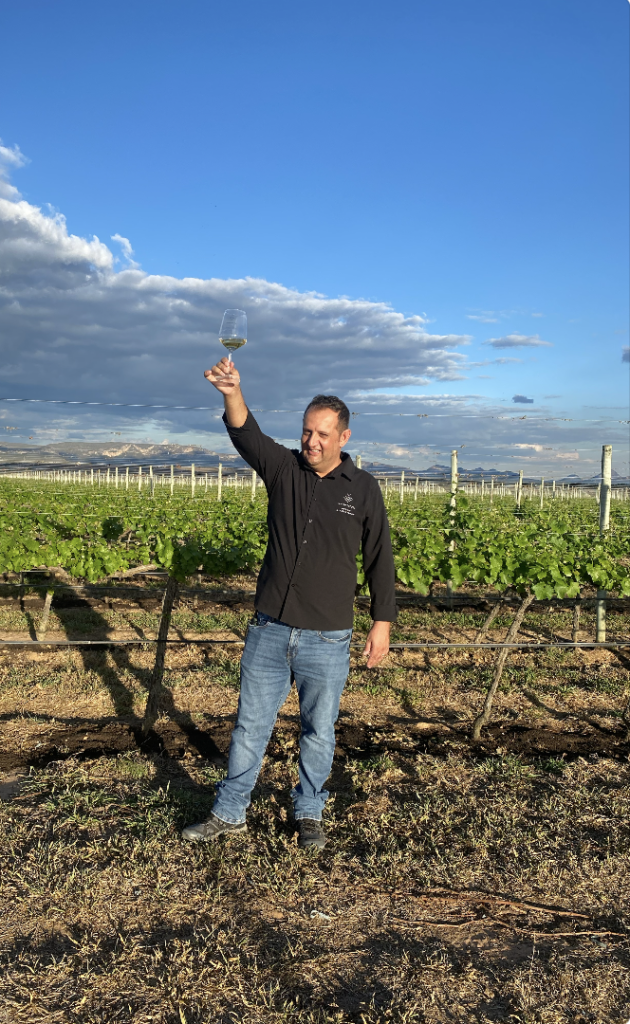
Saiba mais sobre Fabiano Borré, diretor executivo da Uvva.
Saiba mais sobre Mucugê, o Museu Vivo do Garimpo e o projeto Sempre Viva.
O Brasil de Vinhos esteve na Chapada Diamantina a convite da vinícola Uvva.

Partial reproduction of the story below is allowed as long as credited, with original authorship and link, as follows: by Lucia Porto, in Brasil de Vinhos
The Uvva of Chapada Diamantina
We do not need to repeat that Brazil is large, huge, a continental country, one of the largest in the world with a territorial extension of more than 8.5 million square kilometers, with different climates in the most diverse regions: the mixture of equatorial, tropical and temperate gives us a climatic diversity that is not common in many places.
Here, on average, temperatures are high throughout the year, oscillating close to 24°C, with a temperature range of 5° or 6°.
But there are the extremes, which in general are not good. Except for certain crops, and the grape grown to make wine is one of them.
Because this thermal amplitude is one of the high points of the characteristics that make up the terroir of Chapada Diamantina in Bahia, Northeast of Brazil, more specifically in the municipality of Mucugê, where the Uvva winery is located. Searching references, reading articles, studying tables, we have the information of an average variation of 12° to 15° degrees in summer and 9° to 10° in winter. But those who live and work there, say something else: “We direct our harvest to the winter period”, says Marcelo Petroli, Uvva’s winemaker since the beginning of its vinifications, “we work with Dupla Poda because it is in winter that we have our greatest thermal amplitude, with cold nights and hot days, reaching 20o of temperature variation on the same day, a condition that provides for the complete ripening of the grapes.”
Perhaps this is one of the main reasons why winter wines – and in this case those from Uvva, in particular – have been standing out so much recently. The temperature range, added to other terroir characteristics that are just as important, dictates the personality of the grapes and, consequently, of the wines. Here, specifically those from Uvva, which have high acidity and a touch of salinity on the palate, something to be remembered, who knows, as one of the winery’s signatures.
This was just one of the perceptions we had when visiting Uvva an oasis in the middle of the vegetation that mixes the characteristics of Cerrado and Caatinga of Serra do Sincorá, surrounded by rocky slopes, made up of different types of minerals, including quartz, volcanic rocks and schists.
A view of a good part of the 52 hectares of vineyards that have irrigation guaranteed by the Apertado’s Dam – the largest water source in the region, which makes Chapada Diamantina known as the water tank of Bahia – is the highlight that takes the breath away of those who enter the winery building for the first time – a work of art of wine architecture, signed by Vanja Hertcert.
Before Uvva
The origin of Uvva is intertwined with the history of the interiorization of Brazil. It was in the 1980s that the Borré family left São Paulo das Missões, in the interior of Rio Grande do Sul, in search of new horizons in the center of the country. The idea of Pedro and Ivo Borré – father and son – was to acquire land in Mato Grosso, but eventually they bought an area in Ibicoara, in Chapada Diamantina, where they began to work with what they knew: soybeans and wheat, but the crops did not adapt to the long periods without rain. Then they opted for corn and onions, but the result was very similar. On the third attempt, beans, dryland and then traditional, little by little the situation began to improve. In the 1990s, new producers arrived in the region bringing a novelty: the cultivation of English potatoes. The Borrés are in a strong state with the planting of only 2 hectares – today, 30 years later, there are more than 20,000 hectares cultivated on Fazenda Progresso, with a productivity of about 50 tons per hectare, twice the national average, due to the different climate, the temperature range and the altitude, which allow the daily harvest of potatoes.
Coffee
Surrounded by the mountains of Serrá do Sincorá and at an altitude of at least 1,100 meters, the lands of Fazenda Progresso seemed perfect for another crop that adapted very well to the region: coffee. And that was the Borrés’ bet in 2005. Currently, this typically Brazilian product, produced by Progresso, has 80% of its production exported to 10 countries. In Brazil, the coffee of Chapada Diamantina origin, grown on Fazenda Progresso, can be found in some capitals under the Latitude 13 brand.
The Wine
A few years later, a new challenge. With extensive knowledge of the soil, the climate, the surroundings, the relief, the terroir, the Borré make another bet: to plant and cultivate grapes to produce wines of excellence in the Northeast of Brazil. To do so, they surrounded themselves with professionals, experiments and cutting-edge research, had Embrapa Uva e Vinho, from Bento Gonçalves, very south of Brazil, as a partner and developed all the first studies and winemaking at the entity’s headquarters in Petrolina – another wine hub in the region, but this is a story for another day.
The first vinifications made in 2015 from grapes planted in Mucugê in 2013 and 2014 were, pardon the pun, water and wine for different people. Fabiano Borré, Pedro’s grandson and Ivo’s son, who is now in charge of the winery, found the result, in his words, “regrettable”, to the point of thinking about giving up the business. But he was prudent and listened to the opinion of an expert, among them Giuliano Pereira, a researcher in oenology at Embrapa, who saw the glass ‘half full’ and assured that this wine had potential.
The Uvva
A leap in time and we arrive at March 2022, when the Uvva winery is officially inaugurated, an oenological dream of excellence that had been gestating for at least 12 years. The architectural project of the winery, developed by Vanja Hertcert’s office, specialized in this type of enterprise, for example, began to be developed in 2014, it took eight years of physical work, which resulted in a state-of-the-art winery, with more than 5 thousand square meters of built area on three floors, located in a total area of 72 hectares.
The winery, seen from the highway, is impressive. But the greatest effect occurs when the main door – purposely kept closed – is opened to visitors: immediately a panoramic view of 80 kilometers, 52 hectares of vineyards, a dam in the background and the rocks of Chapada Diamantina as a frame are immediately unveiled. It’s breathtaking.
But a glass of cold water helps, and a glass of a beautiful sparkling wine cheers you up.
* Spoiler: we tasted two sparkling wines first-hand, which should enter the market later in 2023, remember this and order an extra brut.
On the three floors of the winery, the same elegant, refined and minimalist style as the brand: have you ever seen a simpler, more obvious and genius name for a winery than Uvva?
Because yes, grapes are everything – or almost – for wine. The reason for the repetition of the letter V and the explanation of the brand’s iconography we can see by looking at the view and knowing the history of the region, and then everything becomes even more logical, obvious, natural and organic.
On the first floor, reception, shop and restaurant, furniture signed by brazilian designers such as Sergio Rodrigues, Jader Almeida, Arthur Casas and Carlos Motta. In the restaurant, regional menu, harmonized; in building materials, local products; In the winery’s equipment, preference for the use of machinery from the Brazilian industry. On the ground floor there are tasting rooms, laboratories, tanks and the place where it all began and today serves as a large testing laboratory: the microvinification room.
The beginning of it all
Fabiano Borré Ivo’s son and Pedro’s grandson, and now Uvva’s executive director, proudly says that it was in microvinification that everything originated. “Uvva started here,” he says. “It was the first area built, everything else came later.”
The microvinification room is a small-sized winery: tanks, laboratory, barrels, bottling. And recently a novelty that Fabiano calls the “Time Machine”, a distiller for the production of fortified wines. “Wine comes in from this side today and will only come out in 2030,” he jokes. Let’s wait and see.
The Art Gallery
One more floor down, in a winery, we would usually find little light, silence, a cellar and barrels. And yes, Uvva is no different. Or it is, because in addition to the barrels – hundreds of them – there is also an art gallery curated by Paulo Herkenhoff. A space reserved for exhibitions such as ‘Templo Espelhoado’, by Marcos Zacariades.
The wines
Today in Uvva’s portfolio there are eight labels, including varietals and cuts, in addition to two sparkling wines and at least two other launches that will be offered in 2023. The well-drained sandy loam soil and the thermal amplitude make the labels present typicality and have perceptible characteristic lines: high acidity and marked minerality. The blends are complex and structured, demonstrating a cultivation pattern and concern for the terroir.
At Uvva, the Dupla Poda technique is used in the winter period, where there is the greatest temperature amplitude, with up to 20o variation on the same day. This condition provides a complete ripening of the grapes – evolution of sugars and phenolic ripening. “This helps with the aromatic complexity, aging potential and acidity of the wines,” says winemaker Petroli who met the Borrés in 2012 and two years later was already hired by Uvva. Before that, he worked for major wineries in Brazil, in the Northeast, in Serra da Mantiqueira and in Campanha Gaúcha.

